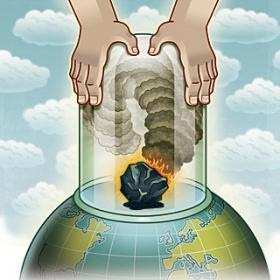May NASA Bring WATER from MOON ? & WHY?

What’s Been Found? Very fine films of water on dust particles on lunar surface How Much Water Is There? 1 tonne of top layer of Moon’s surface could yield 32 ounces of water How Was It Seen? Nasa’s Moon Mineralogy Mapper on board Chandrayaan detected water from electro magnetic radiation emanating from different minerals on and just below lunar surface Why Is It A Big Deal? Potentially, humans could live there. They could split water into oxygen (for breathing) and hydrogen (for rocket fuel). Also, there could be water in other planets too Why Did Scientists Miss Water Earlier? There were traces of moisture on rock samples brought back by other Apollo missions but scientists weren’t sure if the moisture was deposited after these were brought back ‘Comets could have deposited water on Moon’ Wellknown astrophysicist, S M Chitre, said water on the Moon found by Chandrayaan-1 could have been deposited by the comets several billion years ago. ‘‘The comets are like water carriers,’’ he told ...






